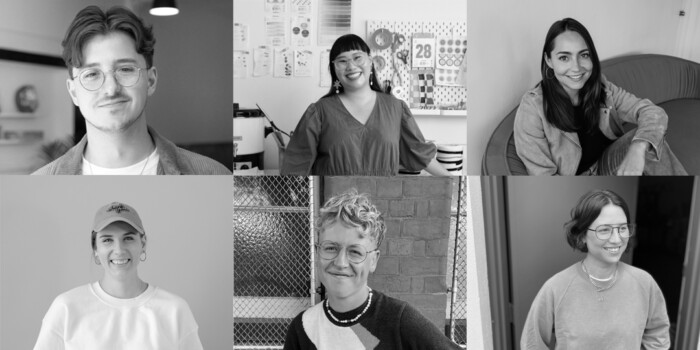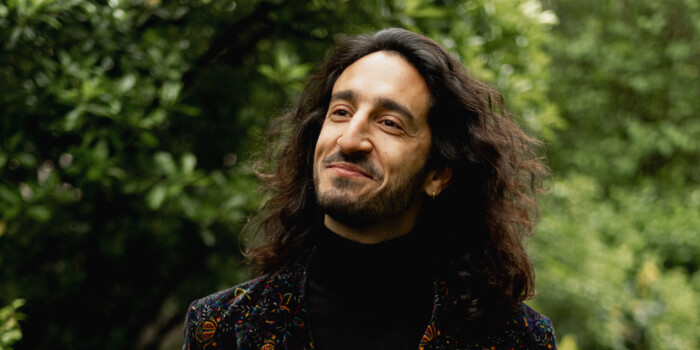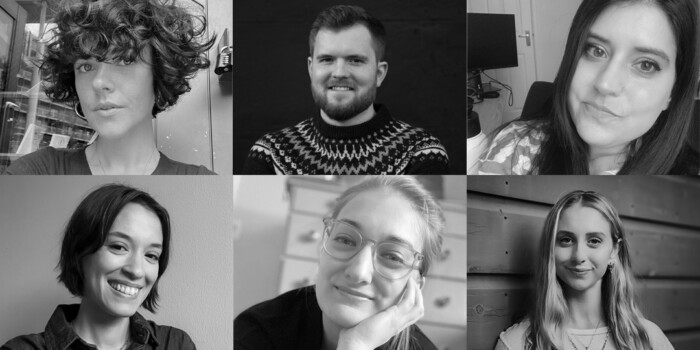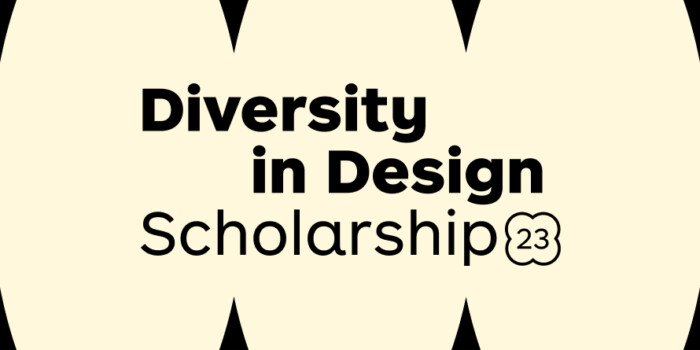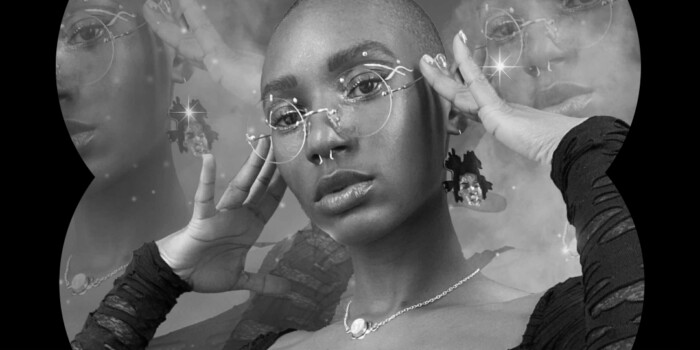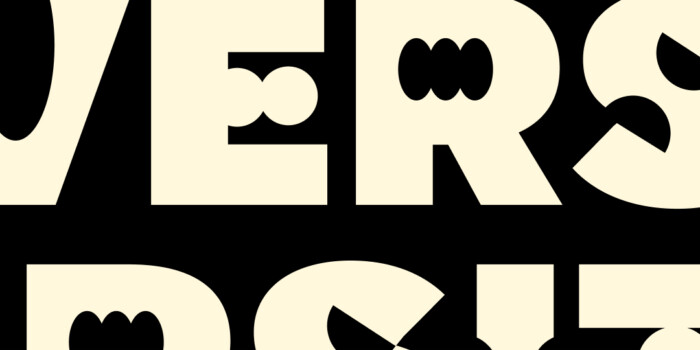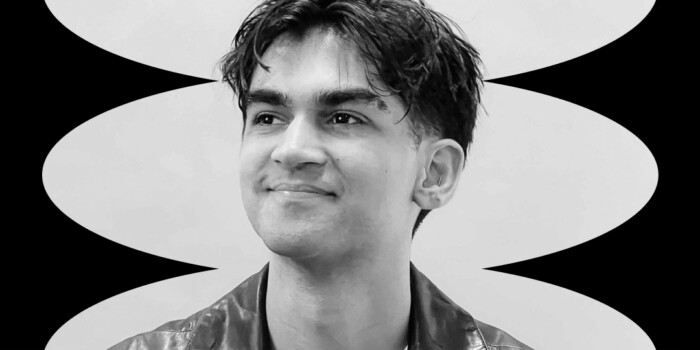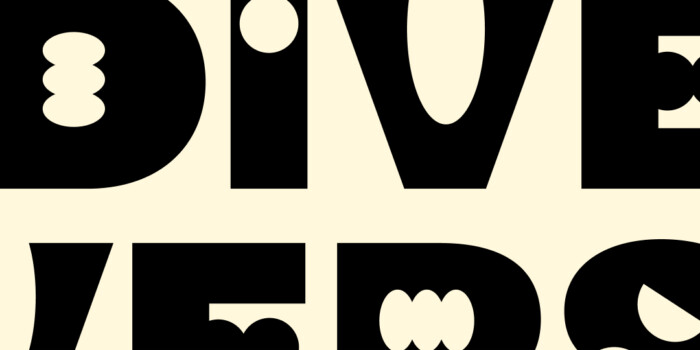Interview with Tom Lucey, Type and Graphic Designer

Hey, I’m Cathy Sison, a graphic designer and full time teacher at Shillington New York. Most recently, I had the opportunity to interview Tom Lucey, a Melbourne based typographer and graphic designer who creates identities and websites for brands and is also a host of the Devign.Tech podcast.
When I left design school many years ago, I heard the word ‘networking’ quite a lot and it was so daunting for me because I was quite a shy-introvert creative. Fast track to 2020, social media is the strongest tool to connect with creatives and industry professionals. I first met Tom at a Design Kids workshop event in Melbourne in 2018. We were both inspired by Frankie Ratford’s work and from there we became fast Instagram friends. It’s amazing having this access and as a freelancer I found it very useful to just reach out and learn from other designers.
I caught up with Tom about how he started out as a designer and how networking and social media have played a part in his career. He shares some insights on taking the leap from working for others to his own successful business.
Tell us a bit about your creative journey? Your passion for your work and how you discovered or nurtured it.
My interest in graphic design has always been based on a love for typography. A fascination with letterforms sparked when I was exposed to graffiti at the age of 12. At school, I would sketch during most classes. In Year 10, I attended agIdeas which was an annual design conference hosted in Melbourne. Seeing Stephen Sagmeister present a lettering project got me really excited about the prospect of being a graphic designer. I started to pour all of my creative energy into my favourite subject Visual Communication & Design (or VisCom for short). I distinctly remember racing through all my other subjects so I could come home and work on my folio. Following year 12, I began studying Communication Design at Swinburne. My favourite subject was Intro to Typography.
But after a year, I was feeling pretty disenchanted and deferred my studies to travel through Europe. Upon reflection, I wasn’t quite ready to study design yet. After returning from a gap year of sorts, I changed course to study International Business at RMIT. The best part of this degree was studying overseas.
After finishing that degree, I interned at IBM in marketing. Halfway through the internship, it became clear to me that I wanted to get back into design. I would dedicate my time outside of the internship to working on my first ever freelance projects. I loved it immediately. Each new project was an opportunity to fill a gap in my design skillset. 9 months into the internship, I decided I wanted to leave early to pursue design full time. That was a tough decision to make as I didn’t have the stability of predictable work. But it was the right decision. That was almost 6 years ago now and I haven’t looked back.
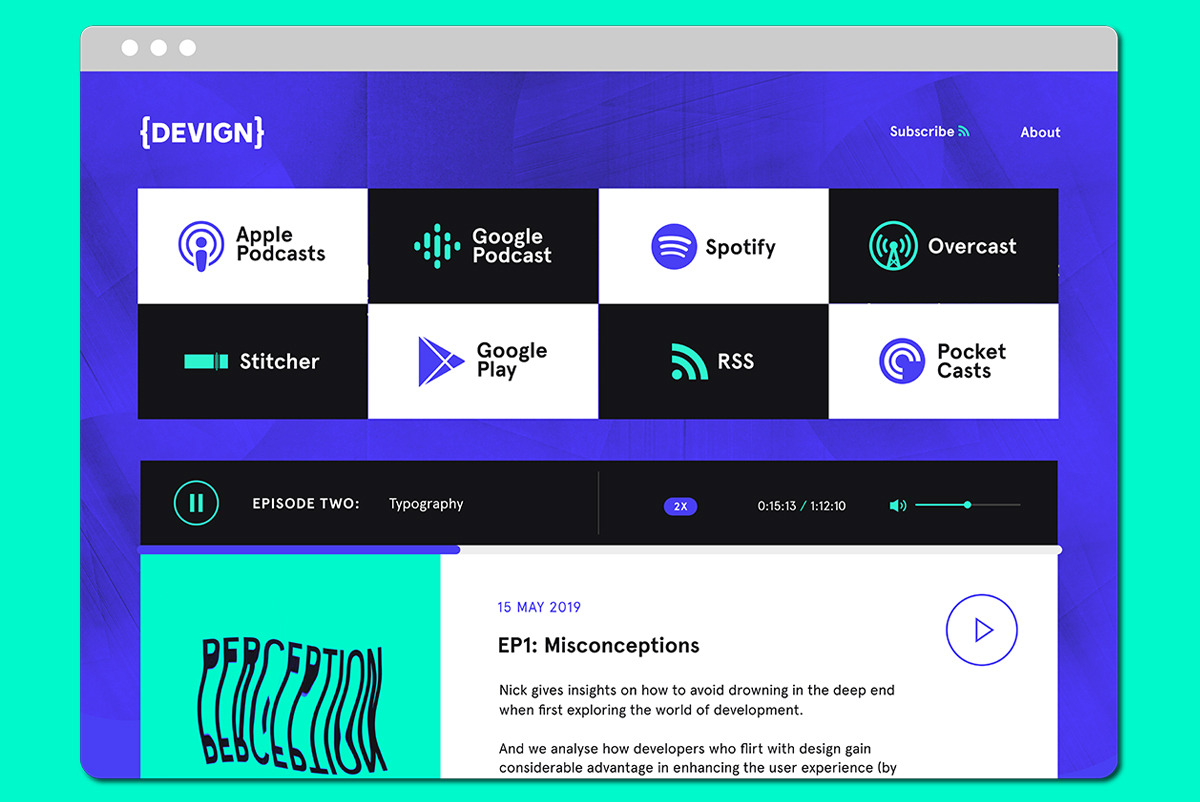
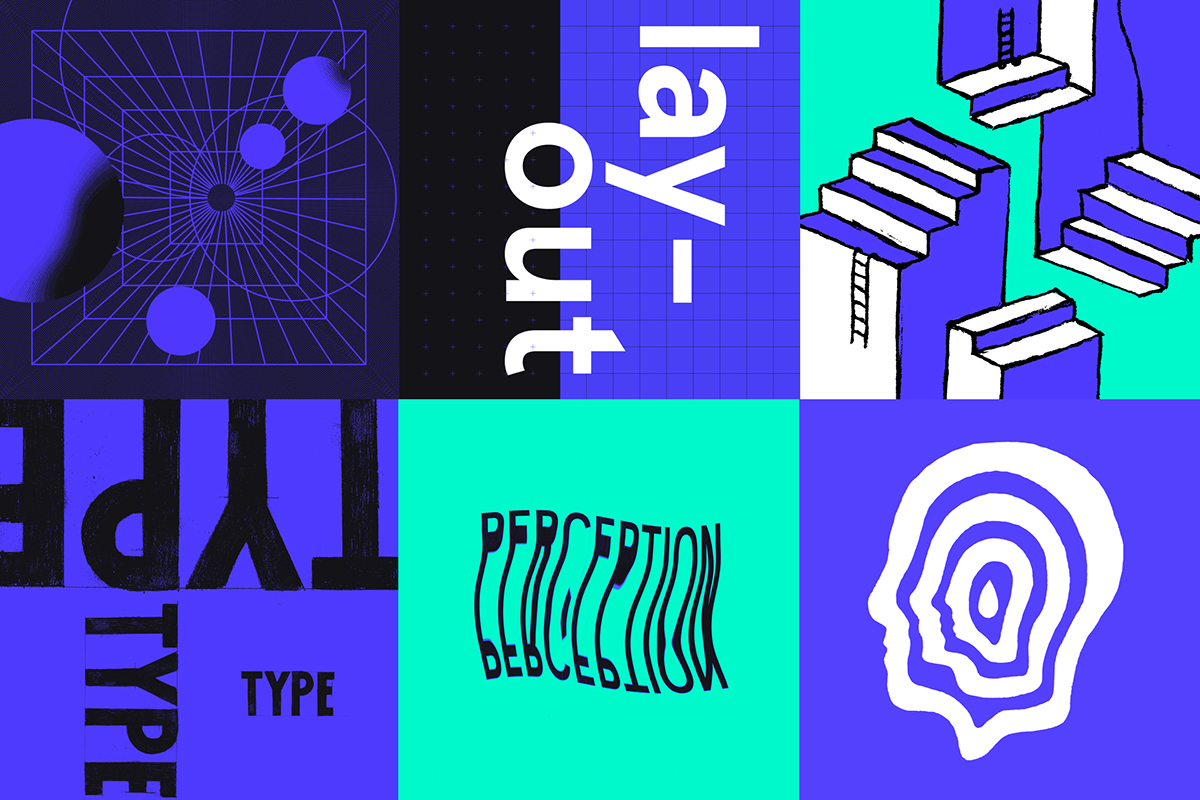
How and where do you find your inspiration? Could you share a few of your go-to creative resources?
Usually, my best ideas arrive when I’m away from the computer. When I’m having a shower or taking a walk for example. If I can’t get away from my desk, super loose pencil sketching helps me open ideas up.
I find Pinterest and Behance to be great starting points for getting the creative juices flowing, but equally, consciously try to not spend too much time on these platforms.
Because inspiration comes from unpredictable places. Maybe it is a conversation at a pub or a lyric that knocks me out at a live gig.
The other designers I share a studio space with are so awesome to have around. We have a very open environment where everyone throws ideas around and helps give constructive feedback.
Now that I’m starting to work on type design more, I find some of the best resources for that are old type books. The ones that have specimens from the early 1800s (sometimes even earlier!). What is fascinating peeling through these pages is that so many great ideas have been executed really well already. In this sense, I think it is better to take inspiration from an old Caslon face than something that Pinterest might spit out. As it is more likely to have a solid foundation. Because it came from a time when computers didn’t exist and so the minimum level of craft was on average much higher. Now, while it is awesome that the barriers to entry are lower, it is harder to find good quality references because anyone can slap together a font.
For typography-specific resources, these are my favourites:
What is your proudest career achievement to date?
Something I’m really proud of is finishing my first typeface—Lonsdale.

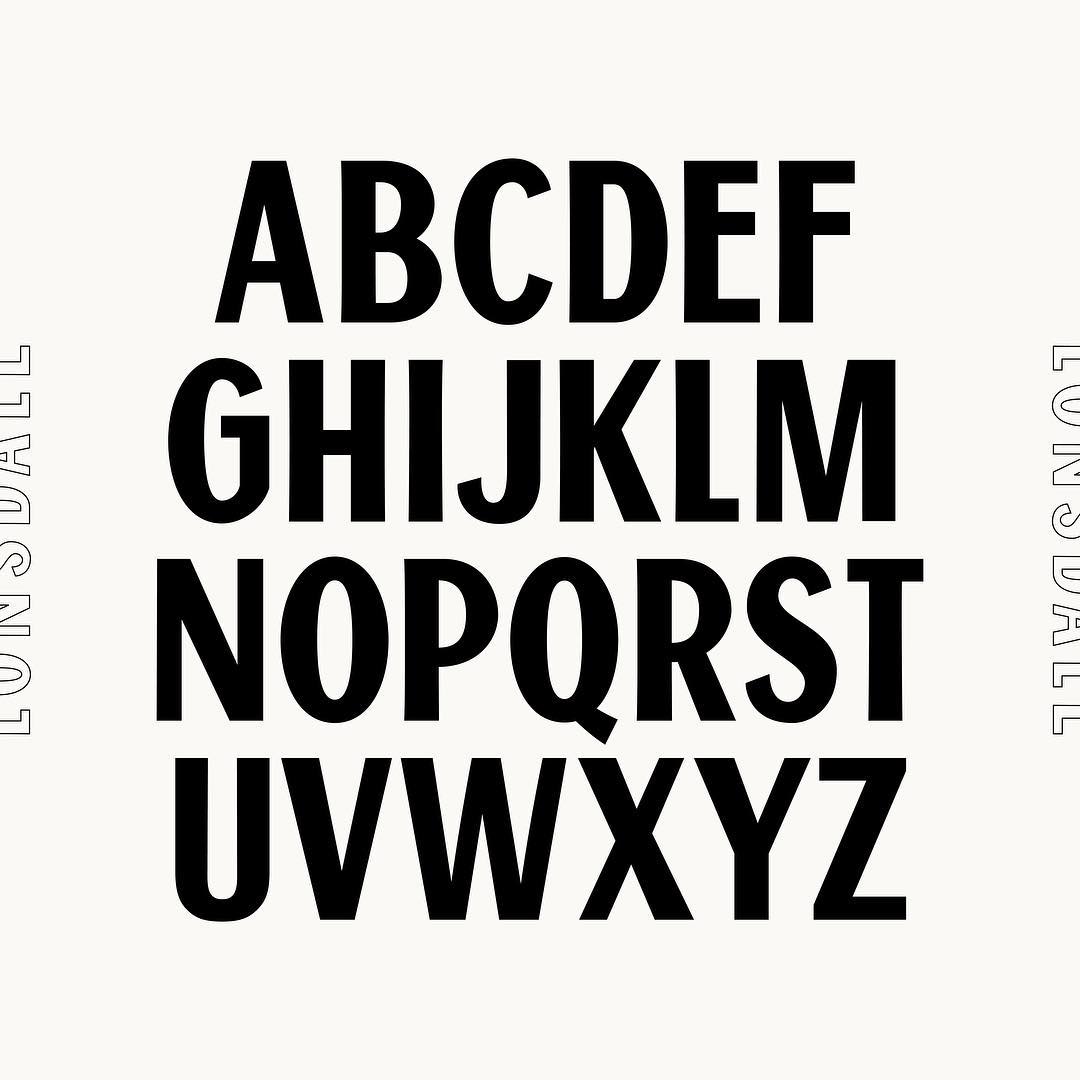
Before completing an intensive course at OSNS, the idea of making a typeface always seemed out of reach. It has been so freeing to begin to understand how type works. It’s like zooming in on the letters I have been looking at by a factor of 10. Noticing all of these details for the first time. It’s a hard slog getting a first typeface done, but now the possibilities are limitless.
Do you have any unexpected tools of the trade? What are the absolute necessities for your creative practice?
Firstly, the almighty pencil and paper. I think this is the best for rapidly developing ideas at the beginning of a project. Tracing paper is also awesome for refining details. I use type design software Glyphs for all custom typography work now. It gives me so much more control over fine details when compared to Illustrator. For web design, my go-to tool is Figma. It is awesome for creating interactive prototypes, loads really fast and best of all is free! For project management, Trello has been a game-changer.
What have been one or two of your favourite recent projects? Why?
Arrive & Thrive brand identity, website design and development. The company provides career support to high school and Uni students. I loved working on this project as I was there with the co-founders from the very beginning. It involved building a visual identity from scratch and designing and developing a website.

It was one of the first websites I developed on my own so it was a very enjoyable learning experience. I think it has also helped me communicate better with developers as I have more of an idea of what goes into building a site.
Which other designers, artists or creative people are you loving at the moment?
- Kris Sowersby. Such a prolific type designer. I love his reading his blog.
- Jeff Tweedy was my most listened to Spotify artist from 2019. I love his lyrics and alt-country sensibilities.
- Josef Müller-Brockmann. The grid god.
- For modern type design, my favourite foundries are Lineto, Colophon, Grilli Type and Klim.
- I also love how expressive Oh No Type Co is too.
Are there any future projects you can tell us about?
I have a new reverse contrast display typeface in the works. I am aiming to have a rough set of glyphs ready for an upcoming ‘typathon’ I am going to. This is basically a group of emerging type designers getting together for a weekend away to work on our respective type projects, encourage each other and share feedback.
Following the devastating bushfires which burned throughout Australia, a few tradies came up with the idea to volunteer their services to communities in need. Piers Smart created a Facebook group called Tradies For Fire Affected Communities and rapidly thousands of tradies began to pour into volunteering. But the Facebook group was becoming difficult to manage. In collaboration with my friends Kody and Scott who run studio Child In Me, we have designed a brand identity, tone of voice and website to simplify this experience for tradies and communities in need. To connect them easily. The site should be going live in about a month, it is currently being developed by Deloitte.
It has been a heartwarming experience to witness everyone pitch in. Type foundries donated typefaces, Nat Geo photographers donated their photos and of course, we donated our design services.
Five words to describe yourself and your creative style.
Restrained, rational, minimalist, typography-focused.
Was creativity a part of your childhood?
Not really, no. I think my first creative expressions started to come out around the age of 13 in the form of graffiti. In year 12, Visual Communication helped me harness the creative energy I had built up. It was after high school that creativity really started to feature prominently in my life.
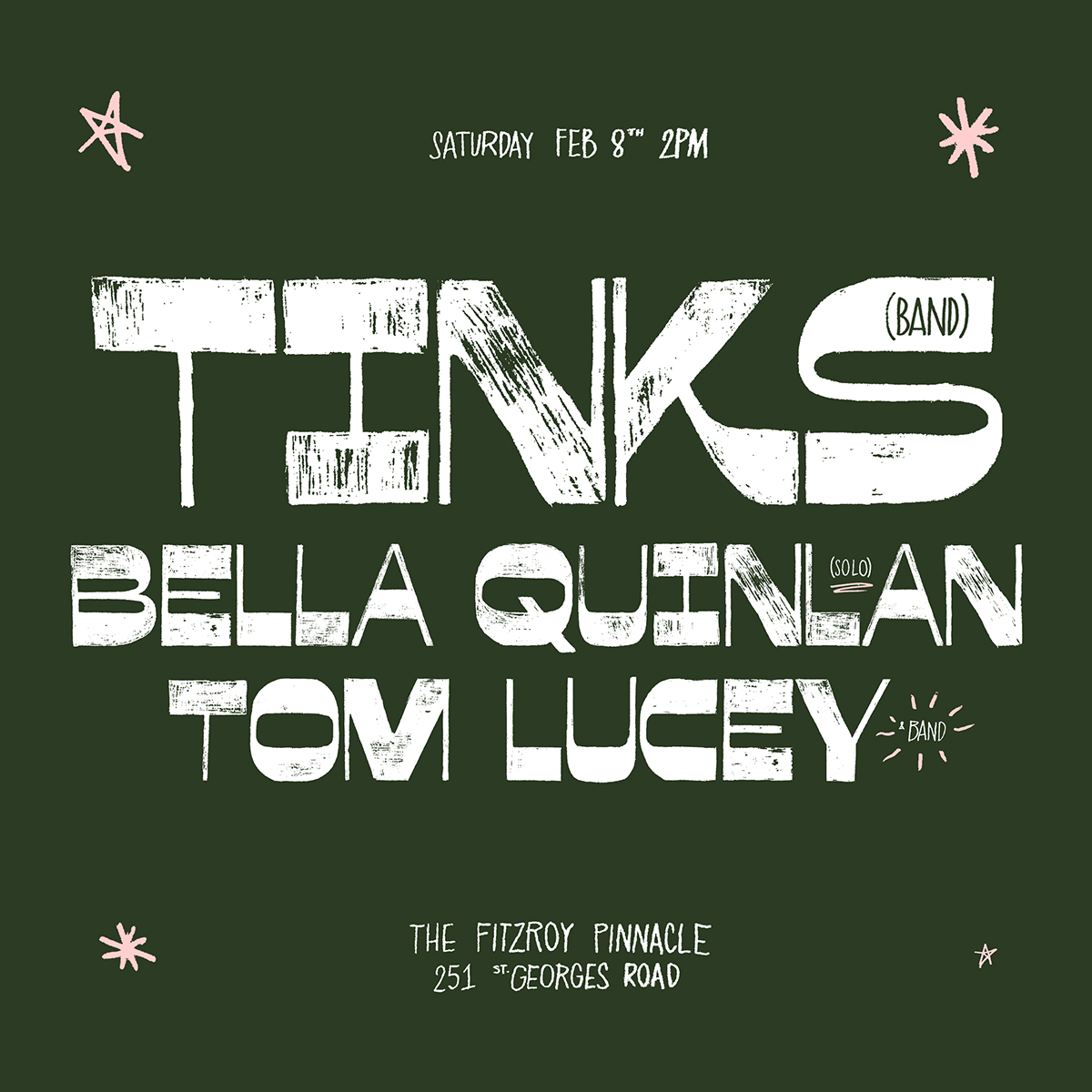
Is it important to be a part of a creative community?
Absolutely. Particularly if like me you run your business alone. Being part of a creative community breaks down perceived walls. Everyone has struggles.
Being part of the community means we can offer and receive support.
What is your daily routine like?
Coffee, breakfast, walk from my house in Fitzroy North to design studio on Brunswick St.
Open up Trello, see where projects are at. Jump into design work. Maybe have a client meeting or presentation. Send invoices, get on top of emails, then back to design work.
Ask some of the other designers in the space for feedback. Ponder whether to go demibold or bold with a typeface for a while. Head out for lunch and get what I think is the best Banh Mi in Melbourne. Their tofu or crispy pork rolls are amazing. Also, their Vietnamese iced coffee is so legit.
Back at the studio have a solid 2-3 hours of design time. I might send a work in progress to a client before calling it a day. Lately, I have stayed for another hour or so to work on type design. So last week I focused on a letter each day for a new typeface. After work, I’ll walk back home, pick up my guitars and drive to a band rehearsal. I’ll get back around 10pm and sort out something for dinner. If I don’t have rehearsal I’ll try and catch a live gig or attend a design event.
What are some of your books and movies?
- Books: Logo Modernism, Grid Systems
- Movies: Abstract Season 1—Paula Scher, Abstract Season 2—Johnathon Hoefler, Sign Painters: The movie, Helvetica
What do you wish you knew when you were starting out as a designer?
It is better to share the first version of something early than be crippled by perfectionism. Better done than perfect. Design is an iterative process. Typography is the most important aspect of graphic design.
Seek and embrace feedback from your peers.
Don’t get emotionally attached to your work. Prioritise mental health. Take holidays. Charge more. Anything is possible if you believe it to be true.
What was the biggest mistake you made as a junior designer?
One of the biggest mistakes early on was pitching expensive typefaces without knowing how much the licensing was going to cost. After getting concepts all the way across the line with trial versions, I learned that type was going to cost $1000 in licensing. It was a low budget project so I decided to wear this cost. Lesson learned—check licensing before presenting a typeface and talk about the cost early.
How can young designers make an impression during a first internship or job?
- By saying yes to everything put before them.
- Show genuine curiosity—ask heaps of questions.
- Do research outside of your time-on-site between days to build on what you learn while you’re there.
Any portfolio pet-peeves or tips?
One thing that pops up quite often is no description of what a business actually does and who they do it for. It’s hard to evaluate the effectiveness of design if the audience and purpose is unknown.
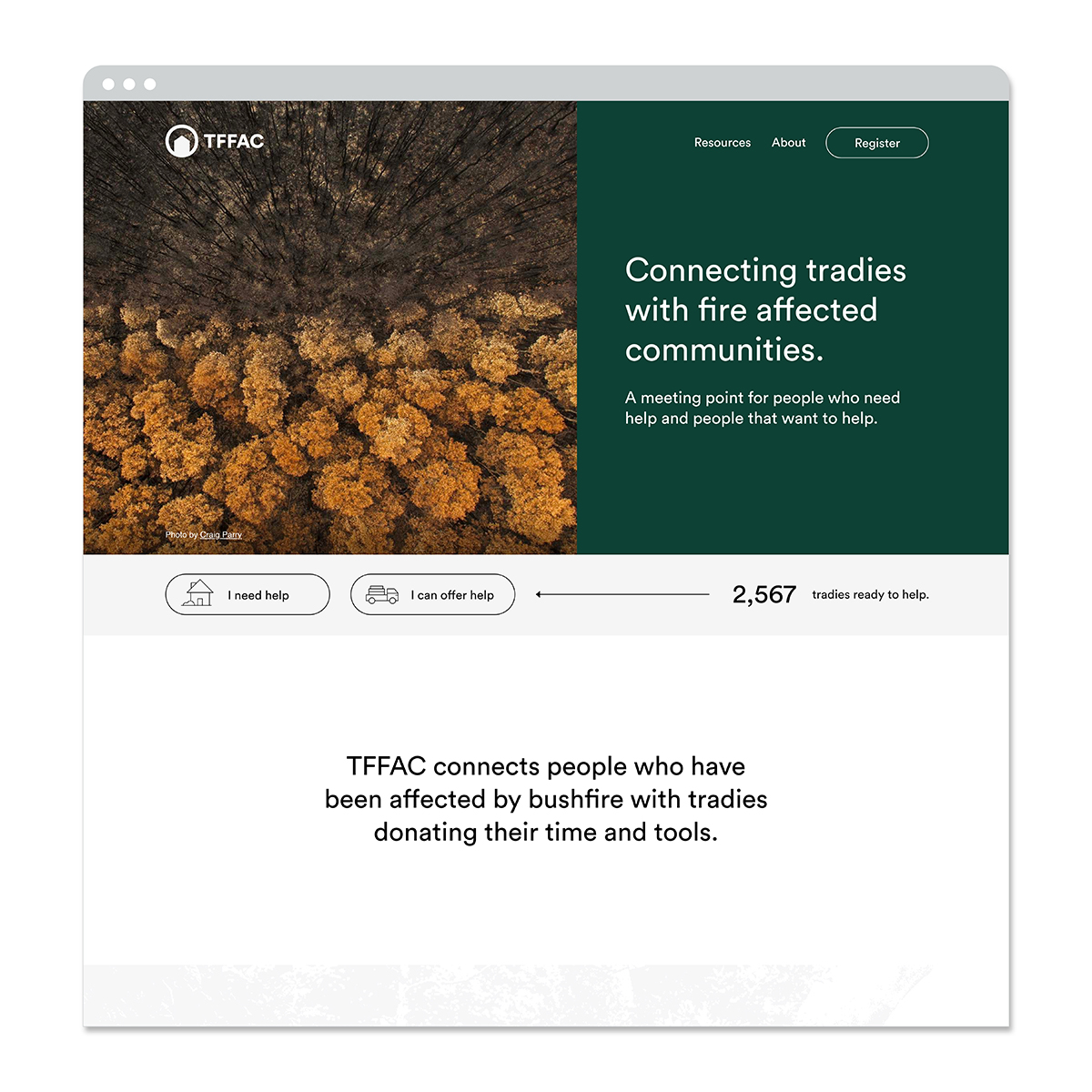
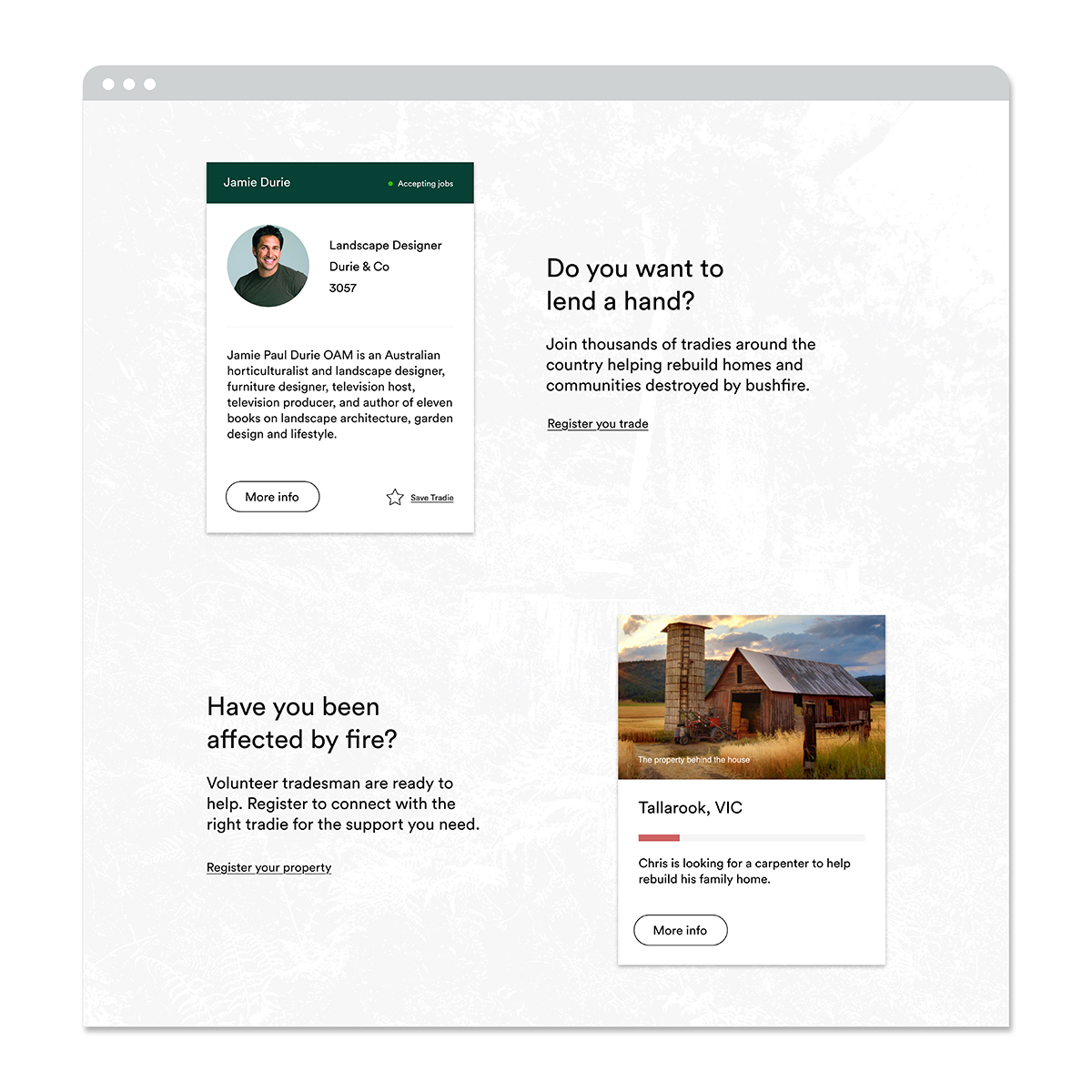
What’s your #1 piece of advice to a recent design graduate?
Try and get clear on what you want. The clearer that vision is, the easier it is realised.
Maybe it is a gig at your dream studio. Maybe it is studying type design in The Netherlands. Articulating it is the first step toward achieving it.
What advice would you give to a young designer starting out?
The quality of your work is usually based on the quality of your references. Look far back in time for design references. And look beyond the realm of design. Contact your heroes. Chances are they will get back to you.
Have you had any mentors along the way?
Yes! Most notably, Johan Debit mentored me for a year. He is the co-founder of a branding agency based in Paris, called Brand Brothers. It was amazing. He provided really helpful advice that only comes from being in the game a while.
The next question deals with risk. Is there anything that stands out?
Running a design business can come with uncertainty. To combat this, I make sure I have enough runway set aside. This is done by calculating how much total monthly expenses are, multiplying it by a comfortable number of months and keeping that total amount in reserve. That way if things get quiet there is enough to not have to stress. Or worse, become desperate and undercharge.
Was there a time in your life when you had to take significant risk to move forward?
There have been a few times! Maybe not so many conscious risks, but chartering unknown territory for sure. Resigning midway through a marketing internship at IBM to go into freelance design was a pretty large risk. All my study and work experience up to that point was leading me to a corporate career path. I decided against that.
Moving to Brazil to live with my partner with no work. This was after I had decided that I wanted to work exclusively in design. So I had to build a design business with mainly Australian clients from the other side of the world. I also had to fill the gaps in my graphic design understanding by completing online courses in tandem with working on client projects. It wasn’t easy to nurture clients from the other side of the world. But it was during this year that I really built the foundations of my business and graphic design knowledge. I think it is an ongoing decision that I make (and risk that I take) to work for myself.
Striking that balance between stability and predictability can be so tough as a freelancer. So, do you feel creatively satisfied?
I definitely feel creatively satisfied overall, but that doesn’t come purely from the client work that I do. Sometimes client work is awesome and I feel totally engaged. Other times, it is there to pay the bills and provide oxygen for other creative endeavors. Stability can come in the form of retainers and money set aside for quieter months.
But to stay creatively satisfied, I have music and type design in the mix. I’m deeply involved with writing and performing music and designing artwork for gigs. Usually, within this realm, the design briefs are loose and allow for wild experimentation. Type design is quite a meditative process. It takes a very long time, but to be slowly building something in the background is very satisfying.
What kinds of projects are you working on in the studio right now?
I’ve been creating a wide series of assets for a client, spanning web design, print collateral and custom illustrations. This one has been heaps of fun as I hadn’t really done a set of illustrations for a client before.
Another awesome project I am working on is a brand identity for an architecture studio out on the Mornington Peninsula.
Afterhours, I’m working on a new typeface which I am very excited to eventually share. I’ll be documenting the process on my Instagram.
When you started out freelancing, how did you go about finding new clients and marketing yourself?
I made it my mission to over-deliver on every project when I started out. To give the best possible service I could to encourage recommendations. That paired with sharing projects on Instagram helped build a somewhat steady stream of incoming work.
Did you have a moment when you definitely knew that your path is to become a designer?
I think it was during a brush lettering workshop I was attending at Workshop in Fitzroy. At the time I had started to take on freelance projects but was still interning in the corporate world. My instructor Veronica Grow was introducing herself to students. She asked me “are you a graphic designer?” I thought about it for a moment and eventually replied “yes”. It was the first time I identified as a graphic designer and it was a pretty powerful feeling. From that workshop I set the wheels in motion to go into design full-time.
Do you think it’s important to explore things that are outside of your comfort zone to grow as a creative?
I think that is the only way to grow as a creative.
Big thanks to Tom for chatting with me! Make sure to follow him on Instagram and check out his website.
Interested in learning about other creatives in the industry? At Shillington, we’ve interviewed some of the world’s top designers and studios—check out more industry interviews with guest speakers and from past guest authors.
Want to win some amazing prizes and stay in the loop with all things Shillington? Sign up to our newsletter to automatically go in the draw.
